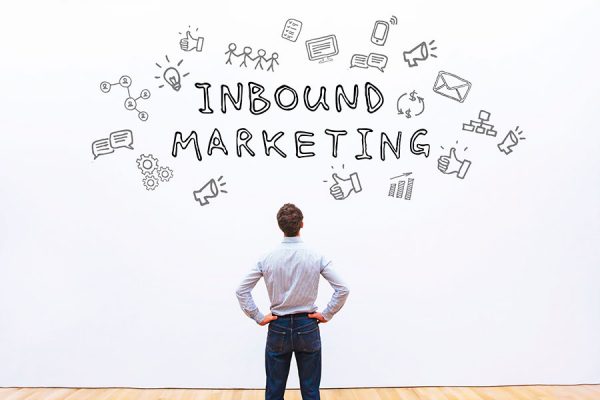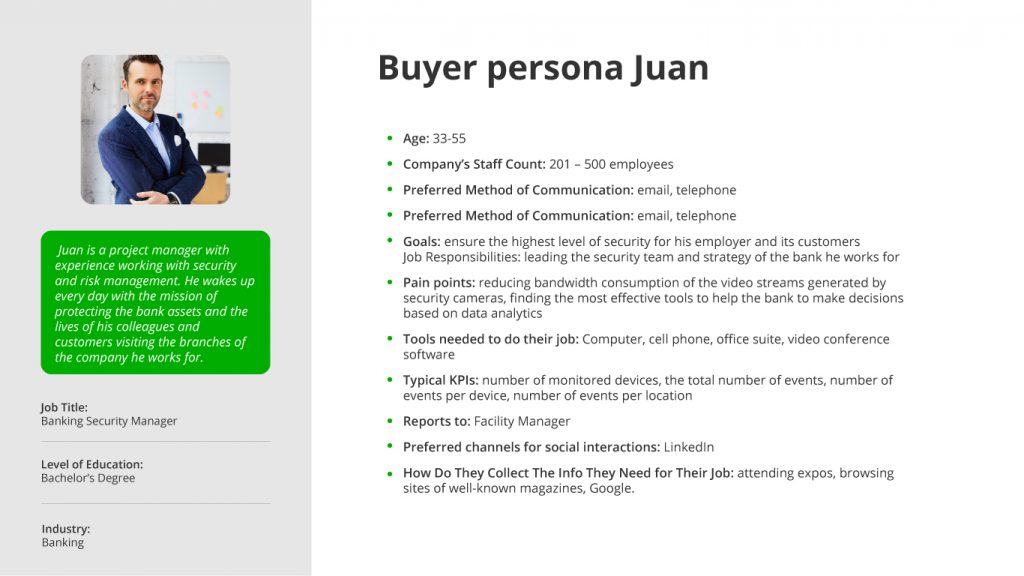For B2B brands, defining a Latin American marketing strategy is not always easy. Sales cycles are long, purchase decisions are carefully considered, and prospects need careful nurturing before buying.
Applying these three critical elements that we’ll share with you today won’t just help you thrive in this landscape, they’ll become the foundation of your digital marketing strategy.
These three elements happen to be the cornerstone of inbound marketing, a business methodology that gives brands, regardless of their size, the opportunity to get their share.
Inbound marketing is mostly powered by creativity, effort, and valuable content; businesses without huge budgets to invest in expensive advertising campaigns can think their way towards success.
There are three key elements that your brand needs to build a successful digital marketing plan.
But first, we need to cover the basics.

What is Inbound Marketing?
A good inbound marketing program starts with creating your buyer persona, defining your buyer’s journey, and developing a content map.

The inbound marketing methodology consists of providing valuable content to build connections with your audience, attracting a constant flow of website visitors, turning them into leads, then into customers, to the point they become promoters of your brand.
It’s a considered process where your content is carefully designed to offer an answer to your customers’ problems so they can make informed decisions.
Understanding outbound marketing, the opposite, is a great way to understand what inbound means.
Outbound marketing promotes through intrusive, one-way messages that people aren’t necessarily interested in. Traditional mediums, such as TV, radio, or newspapers, are an outbound landscape due to their nature.
Outbound tactics (also known as traditional marketing) aren’t that effective nowadays as they don’t focus on providing value. They’re just buy-me messages delivered to you no matter who you are.
Inbound marketing content is generally found organically due to its emphasis on the customer’s pain points.
It’s all about attracting customers (instead of pursuing) by giving them the information they need to solve their problems.
Now that we’ve briefly explained what inbound marketing is, let’s discuss three things you need to do to ensure success in your Latin American marketing strategy.
Read Our Guide: Digital Marketing For B2B Brands
1. Create Your Buyer Personas

The first key element of a successful digital marketing plan is pinning down your brand’s ideal customers.
The best way to do this concretely is by creating detailed buyer personas: Fictional characters that describe and represent your target customer’s psychographic and demographic attributes.
Why are buyer personas important for your marketing? It makes sense to create descriptions that represent your customers.
After all, understanding their interests, background, pain points, motivators, and who they help immensely create authentic and useful content.
Creating your buyer personas is essential for your business as this exercise lets you step into your customers’ shoes.
A detailed description says a lot about what they need to hear and when. It cuts out the guessing when planning your Latin American marketing strategy.
Buyer persona example

These are different methods to gather data to create your buyer persona:

- Interviews and surveys: An excellent way to collect data from prospects, customers, and even other companies in the same industry.
- Market research: The information to fill some fields is readily available online.
- Educated guesses: When you can’t get accurate data about a point with the other methods, an educated guess can be your best option.
- Asking your sales team: Sales teams can provide countless insights as they interact directly with your customers.
Let’s suppose you’re wondering why buyer personas are important for your business when launching a Latin American marketing strategy. In that case, there is a simple answer: buyers in foreign markets are different from the ones in your domestic territory.
Therefore, you need to adjust your content and strategies as their buying motivations may be different.
Simple changes in your digital marketing strategy – for example, using your buyer persona’s preferred channels – can considerably improve your results when targeting your ideal group of interest.
HubSpot offers a great buyer persona generation tool, and which is best: free.

2. Identify your buyer’s journey
Today’s consumers don’t purchase the first offer that comes along their way. Instead, they go through a considered purchase process based on information gathered by consuming content, usually from various sources and potential sellers.
(This is especially true in B2B.)
In the marketing world, we call this process “the buyer’s journey.”
Here are the three stages of the buyer’s journey:

- Awareness: The buyer starts to realize they have a problem to solve, but they still don’t clearly understand it.
- Consideration: The buyer has an understanding of the problem and now needs to find solutions.
- Decision: The buyer has found a solution and now needs to decide which vendor to purchase from.
Buyers have different needs in each of the three stages of the buyer’s journey. Your content needs to fulfill each of these needs to help them complete the journey (and get a sale).
Defining your buyer’s journey helps you understand your buyer’s process to deliver a better experience.
It should also include details about each of the three stages of the buyer’s journey of your brand, with one main goal: assisting your marketing strategy to push buyers through every phase until completion.
3. Create a Content Map
A content map connects all the dots.
Now that you have defined your buyer persona(s) and buyer’s journey, you’re ready to learn how to create a content map – the third essential element of a successful digital marketing plan for Latin America.
A content map assigns each of your content pieces to one of the three stages of the buyer’s journey: awareness, consideration, or decision.
Learning how to create a content map is crucial because it tells you the purpose of each piece of content and how they work together to push customers through each stage.
How to create a content map? The first step is to map your existing content. Have a list of your existing content pieces on hand, and assign each one to a stage of the buyer’s journey.
Example:
| Awareness | Consideration | Decision |
| What is malware? What are the types of cyber threats? | Alternatives to remove malware Firewalls vs. antivirus to prevent malware | The best ten solutions to remove malware Antivirus X vs. Antivirus Y, a quick comparison |
Having this information in a visual map can uncover gaps in your buying process. For example, you may discover that your company doesn’t have enough content to help a lead move from one stage to the following.
After mapping your existing content, you’re ready for the final step – filling in the gaps.
To do this, add a new section to your map with the content pieces needed to reinforce each stage.
| Awareness | Consideration | Decision | |
| Existing content | What is malware? What are the types of cyber threats? | Alternatives to remove malware Firewalls vs. antivirus to prevent malware | The best ten solutions to remove malware |
| New content | Do I have malware on my PC? Should I change my passwords if I had malware? Can malware put my business at risk? | Does anti-malware software prevent all types of malware? The best ways to prevent viruses | Customer story A blog post about the offer Free-trial page Testimonials from experts |
A content map may seem like a bothersome and unnecessary task, but don’t underestimate its value. It gives you a clear, big picture idea of where your brand stands and how to orient your content.
Conclusion
Marketing has changed, so has how brands interact with customers and prospects.
And, as a marketer, you can increase the success of your digital marketing plan by working to understand your audience, their motivations, and needs, and creating content to provide potential answers to their pain points.








